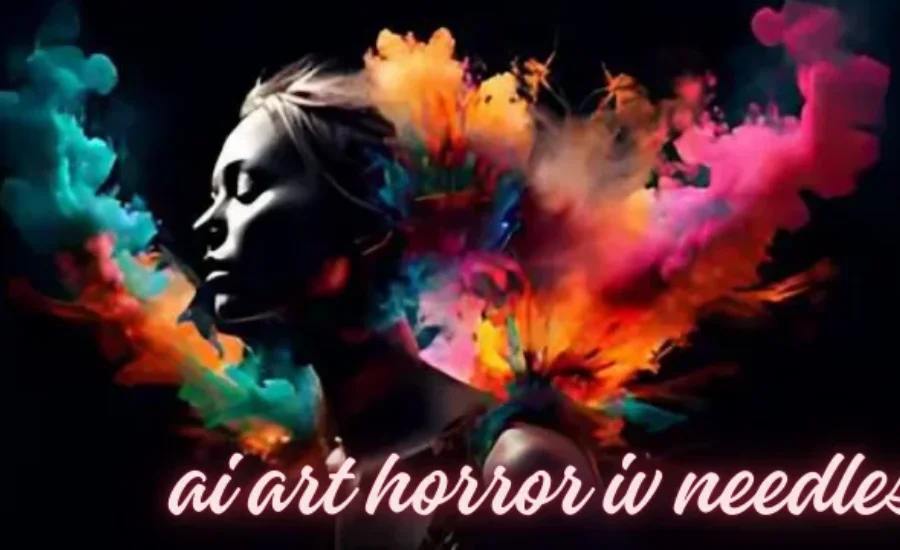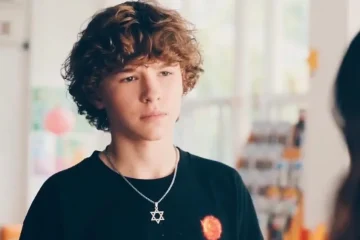When the world of technology blends with horror, the results can evoke both awe and unease. AI-generated horror art has tapped into this fusion, creating visuals that are as imaginative as they are unsettling. One particularly chilling example is the portrayal of IV needles. This imagery not only stirs deep-seated medical fears but also transforms them into an intense artistic expression. By capturing the dread associated with medical instruments, this AI-generated visual distills anxiety into a haunting, yet thought-provoking piece of art.
Why ai horror iv needles ?
The depiction of IV needles in AI-generated horror art strikes a chord with audiences by tapping into the inherent fear surrounding medical procedures and vulnerability. This unsettling imagery effectively captures the anxiety many feel about invasive instruments, turning it into a powerful artistic symbol in the horror genre. The cold, sterile nature of IV needles, coupled with their potential for harm, makes them a particularly effective tool for evoking deep-rooted fears.
The Role of AI in Creating Disturbing Visuals
AI plays a crucial role in crafting these nightmarish visuals, combining creative insight with the precision of advanced algorithms to produce eerie and unsettling images. By blending and reimagining elements in ways that go beyond conventional methods, AI creates artwork that is original and profoundly disturbing. The technology’s ability to analyze patterns and contextualize them in a sinister framework allows for a fresh, yet chilling, approach to horror art.
AI empowers artists to explore new realms of fear, crafting visuals that are both imaginative and deeply disconcerting. In doing so, the unsettling presence of IV needles in these artworks is amplified by AI’s capacity to enhance the psychological impact of fear through innovative design and composition.
The Psychological Impact of Ai Horror Iv Needles: Why IV Needles Are So Effective

AI-generated horror featuring IV needles represents a perfect blend of technology and terror, designed to provoke strong reactions of discomfort and dread. These images leverage AI’s ability to blend traditional horror themes with new, imaginative elements, resulting in grotesque and unsettling visuals that capture the essence of fear.
By incorporating symbols that trigger fear, such as the clinical and sterile nature of IV needles, this art form heightens anxiety and amplifies its psychological impact. AI’s ability to push creative limits allows for the creation of highly detailed, complex compositions that resonate with viewers on a primal level, combining technological expertise with a deeply rooted sense of psychological horror.
This approach to horror art highlights the unique and unsettling combination of advanced AI technology with human fears, pushing the boundaries of what can be achieved in the genre.
The Surprising Role of AI in Horror Art
While AI has transformed industries like healthcare and finance, its impact on the art world is equally striking. In art, AI isn’t just a tool for creation—it becomes a collaborator, crafting unique works through advanced algorithms trained on vast datasets. These datasets include diverse images, artistic styles, and patterns, allowing AI to produce innovative and highly original pieces.
AI’s Disturbing Influence on Horror Art
AI-generated horror art stands out because it bypasses typical human emotional boundaries. Unlike traditional artists, AI can combine unsettling elements—like IV needles, distorted anatomy, and other eerie visuals—without the filter of human hesitation. This unrestrained approach produces artwork that pushes the limits of traditional horror, creating pieces that are not only innovative but deeply unnerving. By blending such disturbing components, AI produces visuals that intensify the psychological impact of fear.
Horror Art Through History: From Ancient Myths to AI
Horror-themed art has evolved alongside human history, reflecting society’s darkest fears and beliefs. From the early depictions of mythological creatures and the supernatural to the Gothic and surrealist art movements, horror has always been a rich and enduring subject. Throughout the centuries, artists have used their work to explore anxieties related to death, fear, and the unknown. Today, AI adds a new chapter to this legacy, continuing the tradition of horror art while pushing it into new, unexplored dimensions.
The Unnerving Power of AI-Enhanced IV Needle Imagery
AI-generated horror art often features imagery that taps into primal human fears, and one of the most effective visuals is the depiction of IV needles. These images elicit feelings of helplessness and vulnerability, drawing on the fear of medical procedures, the invasive nature of needles, and the dread of being physically restrained.
AI amplifies these elements in ways that are both creative and terrifying. For instance, it can distort IV tubes into snake-like forms or morph syringes into threatening appendages. Needles, suspended ominously in mid-air, evoke a heightened sense of unease. This manipulation of familiar symbols through AI transforms them into nightmarish, surreal images that push the boundaries of conventional horror art.
AI’s Evolution in the Art World
AI’s capabilities in the art world have grown significantly, from generating basic designs to creating detailed, highly realistic works of art. Key advancements like neural networks, Generative Adversarial Networks (GANs), and deep learning techniques have been instrumental in this evolution. These technologies have not only changed how art is created but also how it’s perceived, unlocking new creative potential and redefining artistic expression in ways previously unimaginable.
Unraveling AI Art and Its Methods
To truly understand the impact of AI-generated horror art featuring IV needles, it’s crucial to explore the underlying principles, tools, and techniques that define this growing field of creativity.
What Defines AI Art?

AI-generated art is the result of advanced algorithms and machine learning, where artificial intelligence mimics human creativity to create, enhance, or modify artwork. By feeding vast amounts of data into these models, AI can produce entirely original pieces or reinterpret existing art in innovative ways. This technology represents a convergence of computational processes and artistic expression, pushing boundaries in fields like horror art.
Key Techniques in AI-Generated Art
The creation of AI art hinges on several sophisticated technologies:
- Neural Networks: These are modeled after the human brain and allow AI systems to learn patterns, analyze data, and produce images based on what they’ve learned.
- Generative Adversarial Networks (GANs): GANs involve two competing neural networks working together to generate lifelike and progressively complex images.
- Style Transfer: This method lets AI take the artistic style of one image and overlay it onto another, blending multiple creative elements.
- Deep Learning: By training on extensive datasets, deep learning enables AI to replicate intricate patterns, styles, and textures, producing detailed and compelling art.
These techniques empower AI to break away from traditional art forms and produce eerie, unsettling visuals, like those often seen in AI-generated horror featuring IV needles.
The Haunting Appeal of IV Needles in Ai Horror Iv Needles
IV needles have become a recurring symbol in AI horror art due to their deep-rooted associations with fear and vulnerability. The sterile, clinical nature of medical tools, especially needles, evokes discomfort and anxiety, making them perfect subjects for horror-themed artwork.
As AI continues to evolve, more artists are incorporating the unsettling imagery of IV needles into their works. These medical instruments stir intense emotions by playing on our inherent fear of invasive procedures. The cold, mechanical appearance of needles heightens the sense of helplessness, which lingers with the viewer long after they’ve seen the image. This repeated use of IV needles in AI-generated horror demonstrates their effectiveness in creating unsettling and memorable visuals.
The Role of IV Needles in Ai Horror Iv Needles
Why Are IV Needles So Effective in Horror Art?
The imagery of IV needles taps into some of our most primal fears—those related to medical vulnerability and loss of control. These tools, used in life-saving procedures, also symbolize physical invasion, discomfort, and helplessness. In AI-generated horror art, this symbolism is magnified. AI’s lack of human emotional filters allows it to depict these anxieties in exaggerated, sometimes grotesque ways, amplifying the unease that IV needles can provoke.
Historical Connections of IV Needles in Horror
The connection between medical tools and horror is not new. IV needles have long been depicted in horror narratives to symbolize suffering and loss of autonomy. Historically, medical procedures have been linked to torture or invasive treatments, reflecting fears of pain, harm, or irreversible damage. In modern AI-generated horror, this symbolism is revisited, but with a new level of creativity and detail, thanks to AI’s technological capabilities.
Techniques AI Uses to Create Horror Art

Generative Adversarial Networks (GANs)
GANs play a crucial role in AI-generated horror, especially when producing chilling imagery like IV needles. By having two neural networks compete against each other to create highly realistic visuals, GANs can introduce layers of disturbing detail. This makes the representation of medical tools, such as IV needles, even more lifelike, turning them into nightmarish creations that feel hauntingly real.
Deep Learning in AI Art
Deep learning technology enhances AI’s ability to craft complex and realistic horror images. By learning from large datasets, AI can develop a nuanced understanding of horror aesthetics and create more intricate and fear-inducing representations. This makes it possible for AI to add chilling layers of detail to horror imagery, such as menacing needles or grotesque medical settings, bringing them to life in terrifying ways.
Style Transfer for Enhanced Horror
Style transfer is another AI technique used to increase the horror effect in visual art. It allows AI to overlay ominous or unsettling styles onto otherwise ordinary scenes. When applied to the imagery of IV needles, this method makes them appear even more threatening, distorting their familiar clinical appearance into something much more sinister and surreal.
AI-Driven Visual Effects
AI’s ability to generate and manipulate visual effects is key to producing immersive horror art. These effects, such as eerie lighting or unsettling textures, add to the realism and fear factor of the imagery. In the case of IV needles, AI can make them appear as though they are hovering ominously in a darkened room, their metallic gleam made all the more menacing by the subtle play of shadows and light.
Educational Pathways for Future Ai Horror Iv Needles
AI Art in Academic Settings:
Many universities and art schools are now incorporating AI into their curricula, offering specialized courses that provide aspiring artists with both theoretical knowledge and hands-on experience. These academic programs often delve into how artificial intelligence intersects with traditional art forms, including the exploration of horror themes like the use of medical imagery, such as IV needles, to evoke fear.
Workshops and Online Learning Opportunities:
For those who prefer a more flexible approach, online courses and workshops offer accessible ways to learn the craft of AI horror art. These educational resources cover a range of topics, including AI techniques, software tools, and the integration of disturbing motifs—like IV needles—into digital horror art. Learners can gain practical skills that will help them craft unique and unsettling visual stories.
Financial Opportunities in Ai Horror Iv Needles

Making a Living from AI Horror Art:
Artists who specialize in AI-generated horror art can tap into various revenue streams, from selling original pieces to offering custom commissions. Online marketplaces and digital galleries provide platforms to showcase and sell AI-created horror works, allowing artists to reach global audiences. Horror-specific themes, such as IV needle imagery, tend to attract niche collectors who appreciate the macabre and unusual.
Partnering with Brands for Exposure:
Collaborations with companies in industries like entertainment, gaming, or fashion can be highly lucrative for AI horror artists. These partnerships allow artists to expand their visibility while integrating their unique style into commercial projects. Strategic use of marketing channels, such as social media, art exhibitions, and online communities, also helps build a dedicated following and attract potential clients.
Future Directions for Ai Horror Iv Needles
Technological Innovations Shaping AI Horror:
With advancements in technologies like augmented reality (AR) and virtual reality (VR), the field of AI-generated horror art is on the verge of a transformation. AR and VR can create immersive, interactive experiences where viewers can engage with terrifying environments, including scenes that feature unsettling motifs like IV needles. These tools are set to enhance the impact of AI-generated visuals, taking horror art to new heights.
Predictions for the Evolution of AI Horror Art:
As AI and machine learning continue to evolve, the potential for creating even more emotionally charged and lifelike horror art will grow. Over the next decade, these innovations will likely lead to deeper, more realistic depictions of fear-inducing elements, ensuring that motifs like IV needles remain an effective means of delivering visceral and lasting horror experiences.
FAQs
1. What is AI horror art?
AI horror art involves the use of artificial intelligence, such as neural networks and machine learning algorithms, to create unsettling and eerie visuals. These works often explore fear-inducing themes, such as medical imagery like IV needles, to evoke deep psychological responses from viewers.
2. How do AI techniques like GANs contribute to horror art?
Generative Adversarial Networks (GANs) play a significant role in creating AI horror art by generating realistic, yet disturbing, imagery. GANs use two neural networks to compete against each other, refining their output to produce increasingly lifelike and chilling visuals, such as distorted IV needles or other unsettling elements.
3. Why are IV needles a common motif in AI-generated horror?
IV needles tap into universal fears of medical procedures, vulnerability, and bodily invasion. AI can amplify these fears by manipulating the imagery in ways that create nightmarish, surreal representations, making them an effective motif in horror art.
4. Can AI horror art be monetized?
Yes, AI horror artists can monetize their work through various channels, including online galleries, commissions, and collaborations with brands. Many artists also sell their pieces on social media or art-specific platforms, reaching collectors interested in the macabre.
5. How is technology shaping the future of AI horror art?
Emerging technologies like augmented reality (AR) and virtual reality (VR) are revolutionizing AI horror art by creating immersive, interactive experiences. These tools allow viewers to engage more deeply with the art, intensifying the horror through lifelike depictions and environments.
6. What educational resources are available for learning AI horror art?
Aspiring artists can learn AI horror art through academic programs, online courses, and specialized workshops. These resources teach the fundamentals of AI art creation, including techniques like neural networks, GANs, and style transfer, while offering guidance on incorporating horror themes.
Conclusion
Ai Horror Iv Needles art is rapidly transforming the way artists approach the macabre. With advanced technologies like GANs, neural networks, and deep learning, AI offers unprecedented opportunities to create art that taps into primal fears. Motifs like IV needles are particularly effective at evoking unease, and AI’s ability to amplify these elements results in profoundly disturbing visuals.
The future of AI horror art is bright—or, more fittingly, dark—with innovations like AR and VR promising to immerse viewers in terrifying, interactive environments. For aspiring artists, numerous educational and commercial opportunities await, offering a pathway to not only hone their craft but also monetize it in the growing AI art market. As technology continues to evolve, so too will the unsettling possibilities of AI horror art.
Keep the knowledge flowing—check out more at Alevemente.




